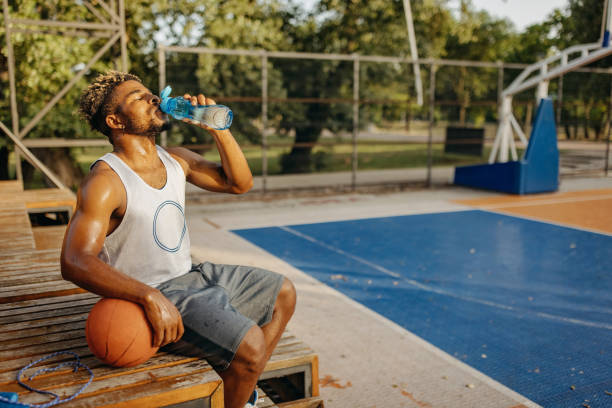By Sheyna Haisman-Holmes
In Ayurveda, there are 14-16 srotāmsi or srotas (pathways/channels) in the body. They make up the tissues, what we take in to the body and what we excrete. Of these srotas, there are 3 malas (wastes), which are urine, feces and sweat. It is usually a given that the first two malas occur daily, but how often does sweating occur? Sveda vaha srotas is the channel of sweat in the body that is responsible for many functions of detox and balance. Sweat glands contract or expand to help the body maintain the right temperature. When the body gets too hot, it starts sweating to cool itself down. It’s important to get the body hot throughout the whole year, even when the sun isn’t out and the weather is cold. When the body gets hot it can burn toxins as well as pathogens that accumulate and enter during the wintertime. Some people who have higher Vata dosha run colder and have a hard time sweating. Pitta people tend to sweat more easily, where Kapha people are also cold and it takes a lot of stimulation to sweat. Aside from using exercise to sweat, there are other ways and therapies to help this channel to flow.
In the colder months, we naturally sweat less due to the temperature outside. During this time, our bodies urinate more for proper detox. However, it is still important to sweat for the health of the skin and sweat glands. Sweating can soften the skin and strengthen the hair roots. It also helps to balance the pH of the skin and electrolyte levels in the body. Sweat is an outlet of water and a by-product of meda (fat) that removes impurities from the blood.
Increased Pitta dosha with repressed anger and envy may cause extra sweating. Excess Vata with increased fear, insecurity and anxiety can cause dry skin from constriction of sweat glands and lack of sweating. Increased Kapha with lethargy keeps the body cold and the skin can get dry as well. The muscle tissues are responsible for creating sweat. The more muscles there are means the more movement of blood, and sweating can occur more frequently. A person with little to no muscle tone doesn’t sweat much through their movements. This is why other methods of sweating are important to use.
Practicing Abhyanga (oil massage) helps to kindle the digestive fire within the cells. When working properly, this fire burns toxins and cleanses the energy field. Oil as a substance helps to balance sveda vaha srotas through the pores and relieves anger, fear and anxiety. The warmth and properties of the herbal oil can be heating to the body. The unresolved emotions that get stuck in the intercellular spaces get released when this fire is strong and the oil can be digested through the skin.
Svedana is a detoxification therapy used in Ayurvedic bodywork sessions and Panchakarma therapy. Commonly after an Abhyanga massage, the person is placed in a steam tent. The steam allows the pores to open up and the oil to penetrate deeper, while at the same time pulling toxins out. Other ways to sweat after oleation is getting into a sauna, hot shower or bath. We don’t all have access to a steam tent or sauna, but a hot shower is great. It has therapeutic benefits of its own relating to water therapy, while the steam opens the pores to detox and let the oil in. Little to no soap should be used during this after-Abhyanga shower to not wash all the oil off. The health benefits of using a sauna are widely talked about for organ health and recovery. Much of this has to do with tolerating the heat and allowing the body to detox through sweating, amongst many others. Some people use personal sauna bags or infrared sauna tents, which are also an option if you need support in sweating.
When we are sick and have a fever, it’s a good thing to sweat! The body is fighting off the virus or microbes and producing a lot of heat in the process. Ayurvedic texts say to not suppress fever symptoms and that it’s important to sweat to let the pathogens burn out. If you have a dangerously high fever, this is a different situation and measures can be taken to lower your temperature. Staying hydrated is very important when experiencing these high bodily temperatures. If you don’t have a fever but are experiencing a cold or flu, sleeping with a hot water bottle, heating pad or electric blanket can help induce sweating. Sweating doesn’t always mean that it is so much to soak your sheets, but just to break a sweat even on the back is adequate.
We can also consume spices that are warming and heating that can help induce sweating. Some examples are cayenne, mustard seed, ginger, rosemary, cardamom, cloves, black pepper, garlic and oregano. When the sun is out, we can prioritize being outside for the production of vitamin D3, warmth and hopefully sweat. We can do cardio exercise and keep the blood pumping with vinyasa yoga and pranayama. We can do weightlifting, jogging or play an active game like basketball. Depending on your constitution, more or less spicy foods or heating herbs can be consumed to warm up the body. There may be a tendency to take off layers as soon as you start to get warm or start sweating. If you are someone who never sweats, consider leaving a layer on and let this detoxification pathway release.
We hope you are enjoying this wintertime and protected in the recent big storms! To your health 🙂
1/11/23
